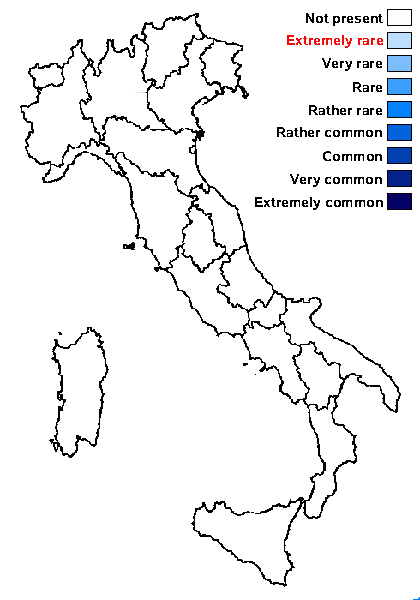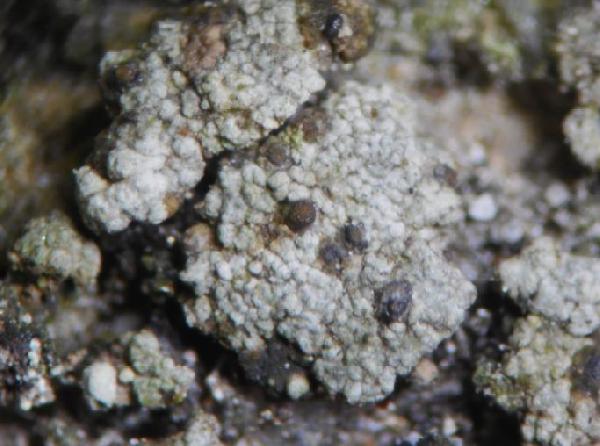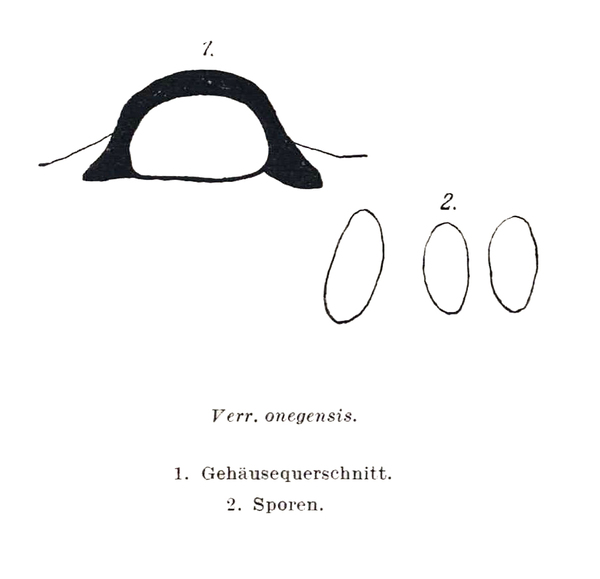Verrucaria onegensis Vain.
Acta Soc. Fauna Fl. Fenn., 49, 2: 53, 1921
Synonyms:
Distribution:
Description: Thallus crustose, areolate, medium to dark brown, dull, 0.3-0.8 mm thick, well-delimited, without a black basal layer and without an apparent prothallus. Areoles separated by wide fissures, (0.5-)1-2 mm wide, round to angular, flat to slightly convex, strongly wrinkled-verrucose. Cortex poorly defined but with a brown uppermost cell layer, sometimes overlain by a thin, irregular epinecral layer; algal layer 150-200 µm thick, with densely packed cells; medulla colourless or patchily brown (especially around perithecia), loose, up to 600 µm thick, inspersed with rock fragments and crystals. Perithecia 1-3 per areole, originating within the medulla and long remaining immersed (at different levels) in raised portions of the areoles, finally with tips bursting through the surface. Exciple globose, 0.25-0.35 mm wide, colourless to brown; involucrellum completely surrounding the perithecium, but basal parts paler and less clearly delimited, 50-70 µm thick; hamathecium of 40-50 µm long, thin, simple or sparingly furcate periphyses, interascal filaments absent. Asci 8-spored, clavate, I-, fissitunicate, the wall thickened above, with an ocular chamber, dehiscent by extrusion of an endotunica to form a delicate rostrum, Verrucaria-type, 70-85 x 20-30 µm. Ascospores 1-celled, hyaline, ellipsoid, 23-27(-30) x 10-13(-15) µm. Photobiont chlorococcoid. Spot tests: K-, C-, KC-, P-, UV-. Chemistry: without lichen substances. Note: a widespread, characteristic but rarely collected species of calciferous rocks, with scattered reports also from the Alps (Austria, Switzerland). To be looked for in Italy.
Growth form: Crustose
Substrata: rocks
Photobiont: green algae other than Trentepohlia
Reproductive strategy: mainly sexual

Predictive model
Growth form: Crustose
Substrata: rocks
Photobiont: green algae other than Trentepohlia
Reproductive strategy: mainly sexual

Predictive model



